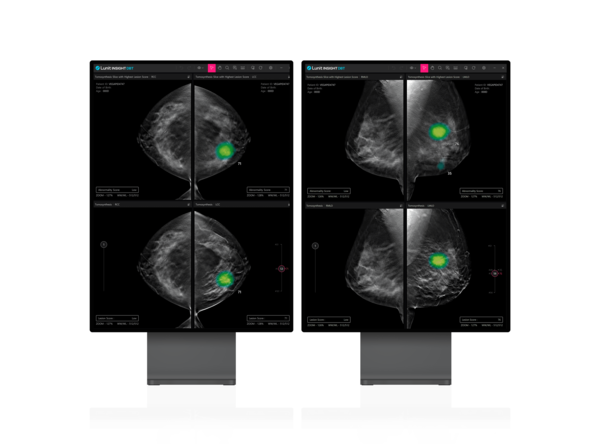Lunit, a provider of AI-powered solutions for cancer diagnostics and therapeutics, announced on Tuesday that its 3D Breast Tomosynthesis (DBT) AI solution, Lunit INSIGHT DBT, has received U.S. FDA 510(k) clearance.

This approval signifies a major step forward in the fight against breast cancer, enabling Lunit to make a full-fledged entry into the US breast screening market, the company said.
Lunit INSIGHT DBT is an AI algorithm designed to analyze 3D images generated by DBT equipment, offering a faster and more accurate breast cancer diagnosis compared to traditional 2D mammography screenings.
Given DBT's ability to provide more precise breast cancer examinations, the demand for this technology is high, especially among advanced medical institutions in the U.S., accounting for over 64 percent of the global demand for DBT, Lunit said.
With the latest FDA clearance, Lunit continues its journey to bring AI breast imaging to the forefront of cancer diagnosis, promising a future where early detection and treatment of breast cancer become more accessible and accurate.
This FDA clearance follows Lunit's previous achievements in November 2021, when it received FDA clearance for its chest X-ray triage solution, Lunit INSIGHT CXR Triage, and its AI-powered mammography analysis solution, Lunit INSIGHT MMG.
Additionally, Lunit INSIGHT DBT was cleared for Europe by being CE-marked under Europe's latest Medical Device Regulation (EU MDR) in March.
"The U.S. holds the largest share in the global breast screening market, accounting for up to 40 percent. More than 40 million mammography screenings are reported in the U.S. annually," said Brandon Suh, CEO of Lunit. "Given this substantial market influence, achieving FDA clearance for Lunit INSIGHT DBT not only solidifies our presence in the largest market but also marks a significant milestone in our mission to revolutionize breast cancer diagnosis and, ultimately, save more lives."
Related articles
- Lunit, CancerX leverage AI-powered solutions to reduce financial toxicity for cancer
- Lunit to provide AI-powered chest screening solution to the Philippines
- Lunit agrees with MD Anderson on AI-based research of immunotherapies’ efficacy
- Lunit to deploy AI chest screening to 5 Saudi hospitals, expanding presence in Middle East
- Lunit's chest X-ray AI imaging solution to be reimbursable from March 2024
- Lunit publishes 'Lunit Scope IO' study in Nature’s sister publication
- Lunit to acquire Volpara Health for $193 million to expand AI cancer screening in US
- Lunit inks $1.86 million deal with Samsung to supply AI solutions for chest X-ray reading

